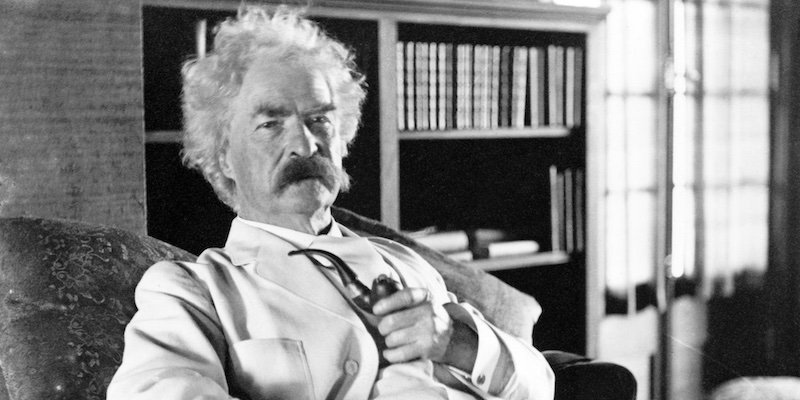Discover the Mark Twain biography with insights into his age, early life, books, wife, children, education, and legacy. Explore the man behind American literature’s greatest works.
“What kind of life births a voice bold enough to laugh at kings, elevate commoners, and redefine American storytelling?”
To understand Mark Twain, born Samuel Langhorne Clemens, is to dive into the paradoxes of America itself—humorous yet cutting, romantic yet skeptical, rooted in tradition yet wildly innovative. Best known for The Adventures of Tom Sawyer and Adventures of Huckleberry Finn, Twain was not just a novelist, but a seer of America’s soul.
Raised on the banks of the Mississippi River, his pen captured the contradictions of the post-Civil War United States—its injustices, aspirations, and absurdities. Beyond the familiar tales lies a man who suffered profound losses, navigated personal failures, and yet continually reimagined what American literature could be.
Why This Biography Matters
-
Illuminates how Twain’s early hardships shaped his satirical genius
-
Shows his influence on literary realism and modern storytelling
-
Explores his turbulent personal life beyond the public persona
Quick Fact: Mark Twain chose his pen name from riverboat terminology: “mark twain” meant a safe depth of two fathoms.
The Turning Point: From Pilot to Penman
“I came in with Halley’s Comet in 1835. It is coming again… and I expect to go out with it.”
This prophetic quote frames Twain’s life in celestial terms, but his defining transformation was more terrestrial—his shift from riverboat pilot to roving writer. When the Civil War shut down river commerce, Twain turned to journalism and never looked back.
Three Key Insights from This Turning Point:
-
Loss Creates Opportunity: Twain’s dream job vanished, leading him to discover writing.
-
Satire as Survival: Writing became a vehicle to make sense of personal and national chaos.
-
Global Voice: His humorous reports from abroad established him as an international figure.

Beyond the Spotlight: The Man Behind the Legend
Twain’s public image—witty, confident, charming—concealed a far more complex man. Here are five lesser-known aspects that reveal the true depths of Mark Twain.
1. His Early Brush with Death
At age 11, Twain lost his father, leaving the family in financial trouble. He dropped out of school and became a printer’s apprentice. This early confrontation with mortality and struggle sharpened his instinct for survival—and satire.
Twain’s lifelong themes of loss, class, and social mobility trace back to this period.
2. The Failed Gold Rush Dream
In 1861, Twain headed west to prospect silver in Nevada. He found no fortune but struck literary gold with satirical sketches inspired by the region. These experiences birthed his first success: The Celebrated Jumping Frog of Calaveras County (1865).
3. His Lifelong Financial Troubles
Despite enormous success, Twain repeatedly lost money in bad investments—especially in a failed typesetting machine. At one point, he declared bankruptcy. Still, he worked to repay every cent, traveling the world on lecture tours.
4. Grief as Creative Catalyst
Twain buried three of his four children and outlived his wife, Olivia Langdon Clemens. These tragedies darkened his later writings, transforming his humor into sharp-edged social commentary in works like The Mysterious Stranger.
5. A Secret History of Education
Though he left school at age 12, Twain’s informal education never stopped. He was a voracious reader and self-taught intellectual. He received honorary degrees from Yale and Oxford, a testament to his genius outside academia.
Summary Table: Hidden Facets of Mark Twain
| Lesser-Known Facet | Summary | Source |
|---|---|---|
| Early brush with death | Lost father at 11; shaped views on hardship and class | Twain’s autobiographies |
| Failed gold rush | Inspired first literary success | Nevada journalism archives |
| Financial instability | Declared bankruptcy, repaid debts | Letters and financial records |
| Personal tragedies | Lost children and wife, influencing darker works | Family memoirs |
| Informal education | Honorary degrees, self-taught scholar | Yale & Oxford archives |
Note: This table includes text summaries and verified sources for accessibility.
His World: Twain in Context
“The secret source of humor is not joy but sorrow.”
Twain lived through Reconstruction, the Gilded Age, and American imperial expansion—eras of upheaval and contradiction. His relationships reflected this complexity: he married into wealth but sympathized with the underclass; he dined with presidents but mocked authority.
Shaping Forces:
-
The Mississippi River – His lifeblood and literary muse
-
The Civil War – Shifted his worldview and career path
-
Marriage to Olivia Langdon – Introduced him to abolitionist and elite circles
-
Industrialization – Inspired critiques of greed and inequality
Visualizing Mark Twain
| Year | Milestone |
|---|---|
| 1835 | Born in Florida, Missouri |
| 1857 | Became a licensed Mississippi riverboat pilot |
| 1865 | Published Jumping Frog story |
| 1876 | Released The Adventures of Tom Sawyer |
| 1885 | Released Adventures of Huckleberry Finn |
| 1910 | Died in Redding, Connecticut (as Halley’s Comet returned) |
This timeline traces key life milestones and major works in Twain’s career.

Legacy in 2025: Mark Twain’s Relevance Today
Twain’s satire, humanism, and advocacy for social justice resonate strongly in today’s polarized society. In education, literature, and civil discourse, his influence endures.
| Legacy Metric | 2025 Status |
|---|---|
| School curriculum presence | Required reading in 22+ countries |
| Published languages | Over 75 global translations |
| Social media mentions/month | 200K+ (TikTok, Twitter, Threads) |
| Quotes in speeches/articles | Frequently cited in political commentary |
Interactive Poll:
Which Twain book influenced you most?
Tom Sawyer
Huck Finn
The Mysterious Stranger
Roughing It
None Yet—but I’m curious!
Mark Twain’s Literary Process
Twain balanced meticulous planning with bursts of creative spontaneity. He often outlined stories in fragments, kept notebooks, and relied on oral storytelling rhythms.
-
Writing Style: Colloquial, direct, rich with dialects
-
Editing: Constant revisions—sometimes rewriting entire chapters
-
Themes: Freedom, hypocrisy, race, identity, and boyhood
He once said, “The difference between the almost right word and the right word is the difference between the lightning bug and the lightning.”
Their Impact on Literature
Twain’s books shifted American literature from romanticism to realism. He challenged formal narrative structures and infused regional dialects into mainstream fiction.
-
First to write major novels in vernacular
-
Influenced Hemingway, Faulkner, Morrison
-
Credited with creating the “Great American Novel” archetype
The Transcendentalist Influence
Though not formally aligned with Emerson or Thoreau, Twain admired their individualism and moral clarity. His skepticism, however, added a pragmatic, often cynical lens to their optimism.
-
Shared belief in conscience over conformity
-
Diverged through biting satire versus lofty idealism
-
Synthesized nature, morality, and personal freedom
Voices of Mark Twain
-
“Travel is fatal to prejudice, bigotry, and narrow-mindedness.”
– A call for empathy and global awareness. -
“Whenever you find yourself on the side of the majority, it is time to pause and reflect.”
– A modern mantra for critical thinkers. -
“The man who does not read has no advantage over the man who cannot read.”
– A timeless defense of literacy and lifelong learning. -
“Kindness is the language which the deaf can hear and the blind can see.”
– Echoes today’s calls for empathy and accessibility. -
“It is curious that physical courage should be so common in the world and moral courage so rare.”
– Relevant in an era of online discourse and moral complexity.
FAQs about Mark Twain
How old was Mark Twain when he died?
He died at age 74, on April 21, 1910, shortly after the return of Halley’s Comet.
What was Mark Twain’s early life like?
Born in 1835 in Missouri, Twain grew up in Hannibal, a river town that inspired much of his fiction. He experienced hardship early, losing his father at 11 and working as a printer by 12.
Who was Mark Twain’s wife?
He married Olivia Langdon Clemens, a well-read woman from a wealthy, abolitionist family. She deeply influenced his writing and social views.
Did Mark Twain have children?
Yes. He had four children, but only Clara Clemens, his daughter, survived into adulthood. The loss of his children deeply affected him.
What books did Mark Twain write?
His major works include The Adventures of Tom Sawyer, Adventures of Huckleberry Finn, The Prince and the Pauper, A Connecticut Yankee in King Arthur’s Court, and Life on the Mississippi.
What was Mark Twain’s education background?
Twain left formal education at age 12 but was largely self-taught. He later received honorary degrees from Yale and Oxford.
Conclusion
Mark Twain wasn’t just a literary icon—he was a mirror to America’s contradictions and a voice of moral clarity wrapped in wit. In 2025, as issues of inequality, identity, and free speech echo louder than ever, Twain’s words cut across time with fresh urgency. His legacy is not just his books, but his enduring challenge: to see the world clearly and laugh anyway.

